You should revisit how you think about eating in CDMX.
A guest letter from a resident expert
At 16 years old, in a dorm room in Westchester, New York, I met Edward Moreta. While I didn’t know it then, Edward would not only become one of my best friends in the world, he would also become the north star of many of my writing ventures. He is, full stop, the most talented writer I have ever met.
A few weeks ago, I asked Edward if he would want to contribute to right on Franklin–I had received a request for Mexico City recs and, while I have been (and ate incredibly well on my trip), I don’t feel nearly well-versed enough to send out a full letter to guide anyone through the city. I could pump out recs of where I went, but Mexico City is so much more complex than I could ever garner from just one visit. So, I brought in an expert. Edward has been living in Mexico for the last two years while he completes his tour as a Peace Corps volunteer. He doesn’t live in Mexico City, but he has traveled quite a bit to the capital, explored, and most importantly, eaten well. Your CDMX guide is below, from the one and only
. You can read more of his writing here:The biggest mistake most Americans make when traveling to Mexico for the first time is believing that they already know something about Mexican food. That they are somehow well-versed or knowledgeable in Mexican gastronomy because they can critique Taco Bell or because they’ve been to a new trendy spot in Brooklyn.
Two years ago, I was under the same impression. I thought I had a resolute understanding of Mexican cuisine. I mean, who hasn’t had tacos and tortas and huevos rancheros and enchiladas? I’m not one of those people anymore, not because I’m an expert (not even close), but because I made the important decision of letting go of any preconceived notions I had of Mexican cuisine.
Like with most cultures, everything is different when you are at the source. Mexican gastronomy is not only about a perfect plate of food, but the process that created the dish. How would one make barbacoa without the pencas de maguey that are often placed on top of the fire pit overnight? You might be able to find nopal, but is it fresh, cut directly from someone’s yard? Is the masa freshly ground, from early that morning? Other than in the robust U.S. enclaves where mostly Mexicans reside, it’s almost impossible to replicate Mexican food elsewhere because it is impossible to replicate the process that begins before an ingredient even touches heat.
The second largest city by metropolitan population in all of the Americas behind Sao Paolo, Mexico City (my favorite city in the world, sorry Alicia Keys) is everything at once, and only complicates matters further. The valley in which Mexico City exists is an essential touchpoint of multiple histories: pre-hispanic, colonial, revolutionary. All of those dynamics still swirl through the air if you look hard enough, sometimes not even in the past at all but right in front of you, tangible, within reach. Add in the present day state of geo-politics and the increasing cosmopolitan nature of the city due to heightened tourism and digital nomads (contributing to increased housing prices, food prices, and displacement of both people and culture) as well as a steady flow of refugees and immigrants from a variety of countries, and you get a place that is simultaneously a bastion of Mexican culture and an international beacon.
Now it’s complicated: how do we approach eating in a place like Mexico City, where there is so much to factor in? Where do we eat in such a place, with so many options, not only of excellent Mexican cuisine, but of Mexican-Cantonese fusion, of Thai excellence, of Cuban sensibility, of the many different cultures existing in Mexico City? I’d be kidding myself if my next sentence was: I have all of the solutions, here’s your guide. I don’t. With a city at such a scale, I think it’s impossible. It’s more attainable, perhaps, by neighborhood, by kind of food, by kind of establishment. But I have some tips, some tools, some personal favorites that might help one build an approach to eating in CDMX.
A lot of tourists have this notion that they need a best-of list, the list of the definitive everythings, but along with our previous assumptions about Mexican food, this is also something we should shed. To think like that would deny the very essence and beauty of a place like Ciudad de Mexico. Dare I say: there is no definitive. It doesn’t exist, not because it’s impossible, but because, in a sense, the city works with a different kind of logic, one that rewards serendipity, openness, awareness, perception, and FUN. There’s so much that’s celebratory about eating in Mexico. It’s such a sensorial experience, but I feel like sometimes tourists can miss out on that experience’s full range due to:
Not eating street food. Obviously, one must have some kind of discretion, some kind of awareness, but you mean to tell me you see a stand where there’s 20 diners AND you see the meat that’s being grilled right there in front of you, but you shouldn’t eat there? You have the stamp of approval from a large sample size and you can see that the quality of meat is better than your Trader Joe’s four day old produce but you’re just going to walk past it as your mouth salivates? For me, these are two of the simplest and most solid rules to follow in choosing street food in CDMX. If I see it and it looks good, it smells good, immediately I’m making calculations. If there’s a lot of foot traffic at the place, especially from people working in the area, I almost always feel relatively secure. They know ball. They’re around here every day and you know your coworkers are always giving free game, providing new spots, making exchanges. This isn’t any different. Trust the crowd this time. This logic can also apply in many of Mexico’s mercados.
Take the online recommendations with a grain of salt.
The longer I live in Mexico, the more and more I become wary of reading recommendations online, especially Google Maps reviews. We have to be aware of two ideas in this instance: 1) who is using these resources and 2) who is creating these recommendations. For the most part, 1 and 2 are the same pool of people, international tourists or Mexican out of towners trying to seek insight in the infinite options the city provides. In a way, it’s an echo chamber that is fed by the people who know the least. Of course, locals might use these tools, but think about it — how often do you leave a Google Review on your local pizza shop, except for in cases of a discount with proof of post? It’s a Catch-22. After a while, I realized that a lot of the (often negative) reviews people left had nothing to do with their food at all but other things that are often either 1. personal or 2. not important.
I know language can be a barrier in these cases, but I promise, people love making recommendations. If you find yourself chatting with someone, ask them where you should go eat! More often than not, it’s going to work out better than just scrolling on Google Maps looking for a 4.8+ rating.
With this in mind, onto my recommendations! I want to note that I tried to gear this away from high-end sit-down restaurants in CDMX, solely because you can go online and look those up very easily. But also because that’s not where the magic happens personally, not only food-wise, but environment-wise. It’s also like, out of my budget most of the time anyways and I leave hungry. So here are some places that I’ve found the magic, I’d never in a million years leave hungry, and that always keep the bank very intact.
A very special thank you to my brilliant friend Luis Galicia, who kept me company during this entire process and took all of the photos you’ll see below! Credit to him, gracias hermano.
Tortas al Fuego
Tucked away at the end of Avenida Sonora, Tortas al Fuego is near and dear to my heart. It’s one of the first places I began consistently visiting on trips to the city and it has never disappointed. What initially drew me to Tortas al Fuego was the presentation: you can see almost the entire operation in front of you, the vegetables, the meats, which is what made me stop and order. All of it is right there: the milanesa (a breaded beef that can also be a breaded chicken), the al pastor (cut from the trompo behind you), like 4 other meats, all seasoned to perfection, saucy, fresh. It’s like alchemy, watching them begin with the meats, then the bread, then beginning to layer your torta.
My go-to: a milanesa torta, the bread soft, fluffy, slightly toasted, with avocado, tomato, onion, black beans, and your choice of heat, I always go chipotle, but there’s also pickled jalapeños (chiles en vinagre). All for… 4 USD. If you want to really try some spice, this is the place to do it, try the chipotle. The guys are so nice and funny, and if you want to sit somewhere, they have seating, or take it to go and eat it at Parque Mexico! Plug for the juice truck next door too.
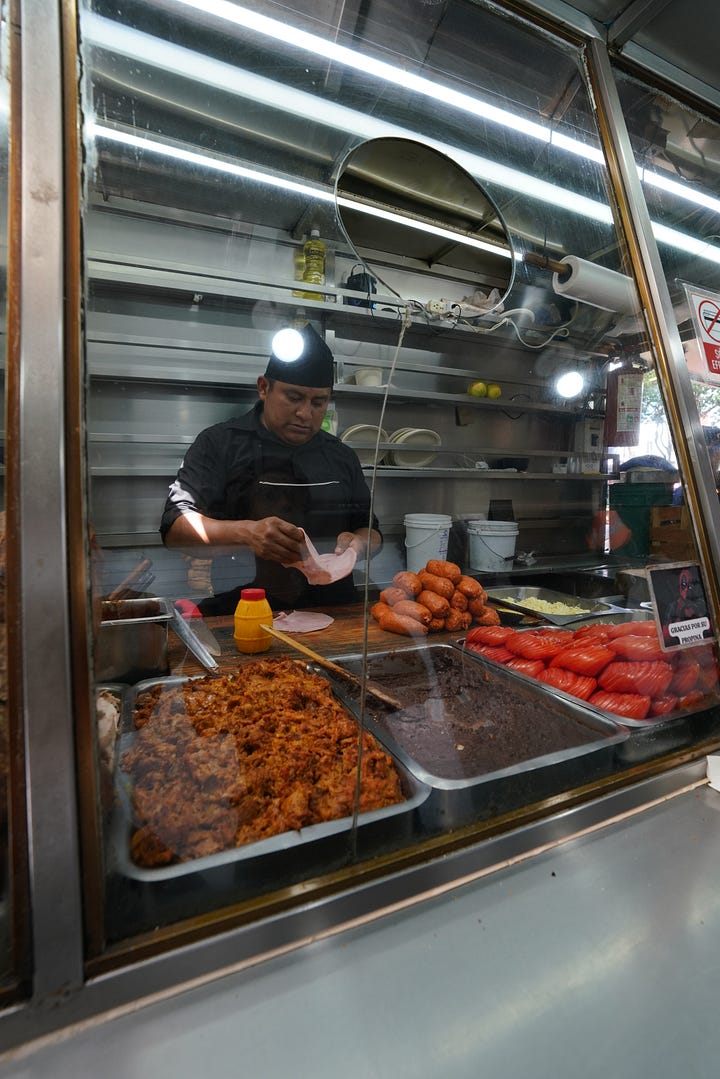
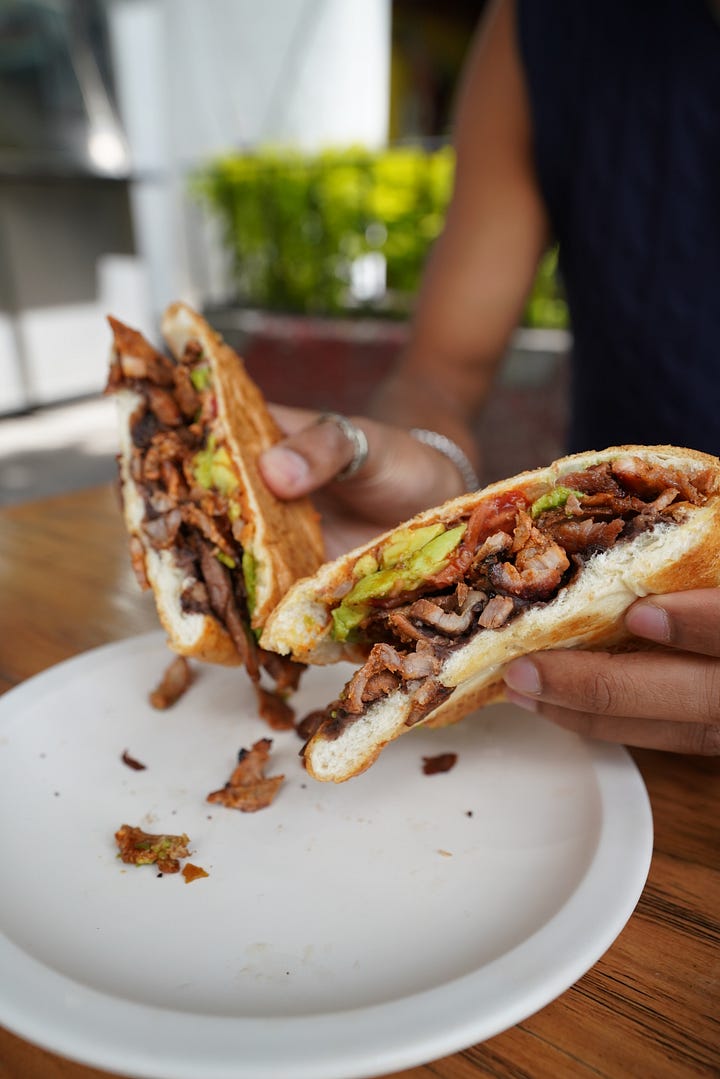


Tacos la flor de turin
I stumbled upon Tacos la flor de turin while searching for tacos that wouldn’t break the bank. There’s something theatrical about the taqueria, which is very simple in its operations: one person on a grill, one person laying tortillas, one runner, one doing everything else, no matter how many people there are. My favorite part of the taqueria is how you order — handed a bite sized notebook and a pen, you write everything you want and turn it in to the runner, who reviews it and hands it further up the chain, and eventually, your order materializes in front of you. The salsas and the toppings are at the front of the restaurant instead of on your table, so that as the orders come out, people float towards the front and prepare their own tacos with their desired amount of guacamole salsa, frijoles, nopales, and pico. There’s a beautiful kind of flow to the space, highlighted by huge tacos (two has always been enough for me) on beautiful fresh yellow tortillas. When we went, we got a pechuga asada taco (grilled chicken), carne enchilada taco (a kind of marinated beef), a suadero taco, and a chicken tinga quesadilla. The quesadilla is particularly amazing and somehow only thirty pesos (like 2 USD). For tacos, I recommend the suadero, which I’ve seen likened to brisket, but I really feel is in a tier of its own. It has an incredible texture, and packs so much flavor. Even if you don’t try it at Turin, try it somewhere in Mexico if you can.
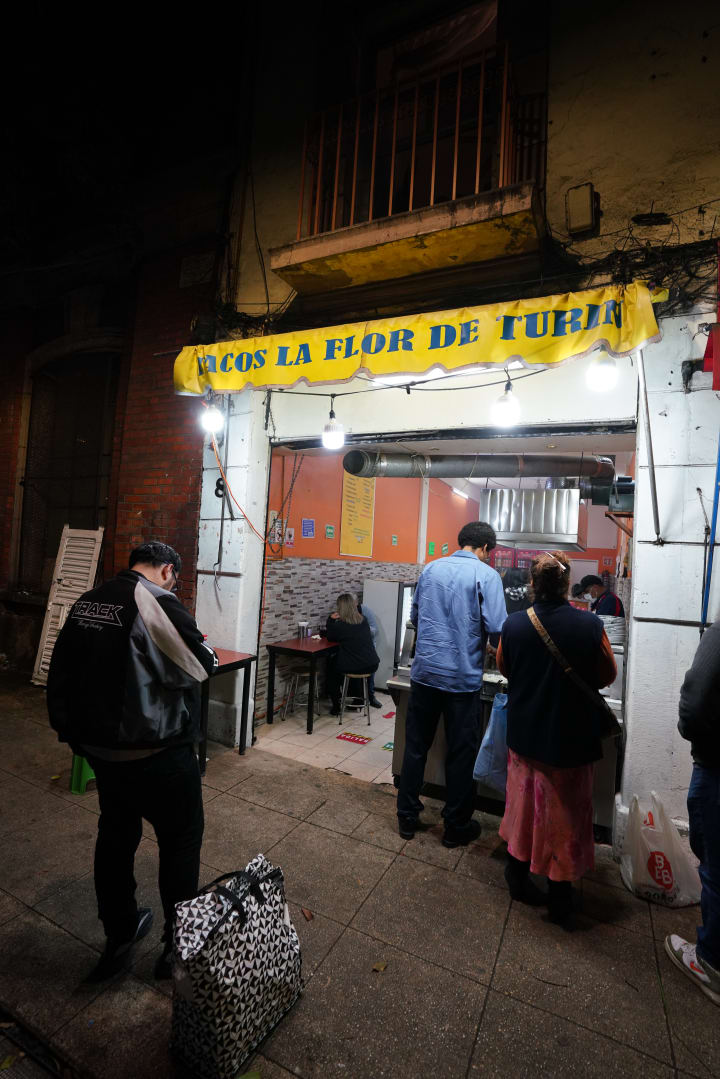

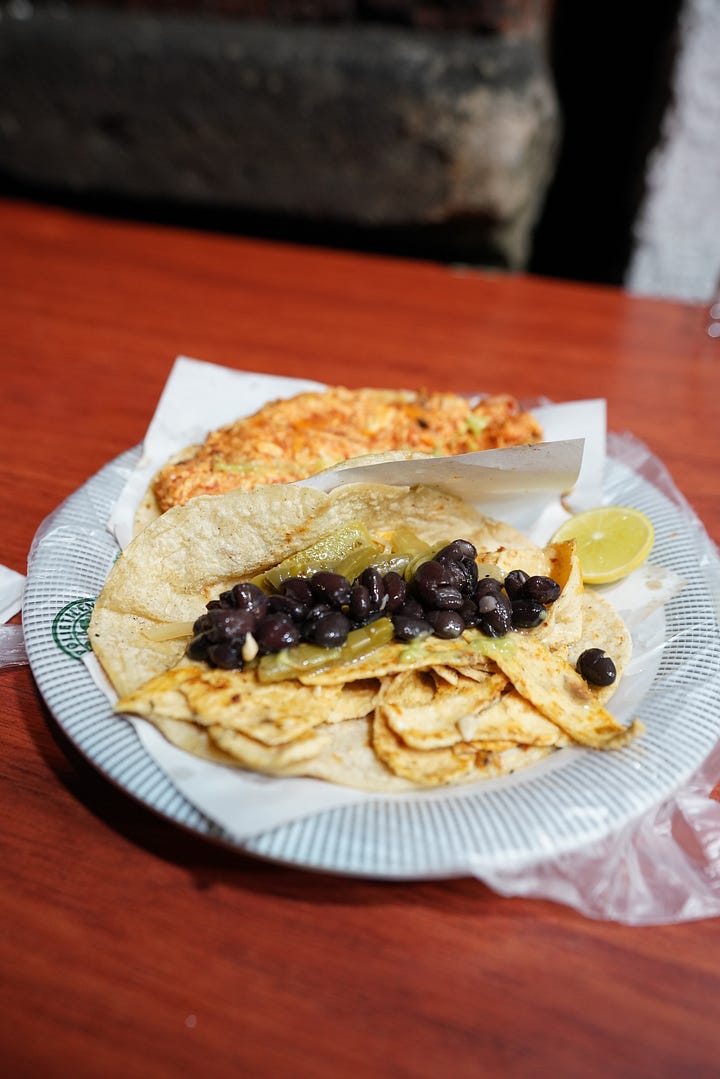
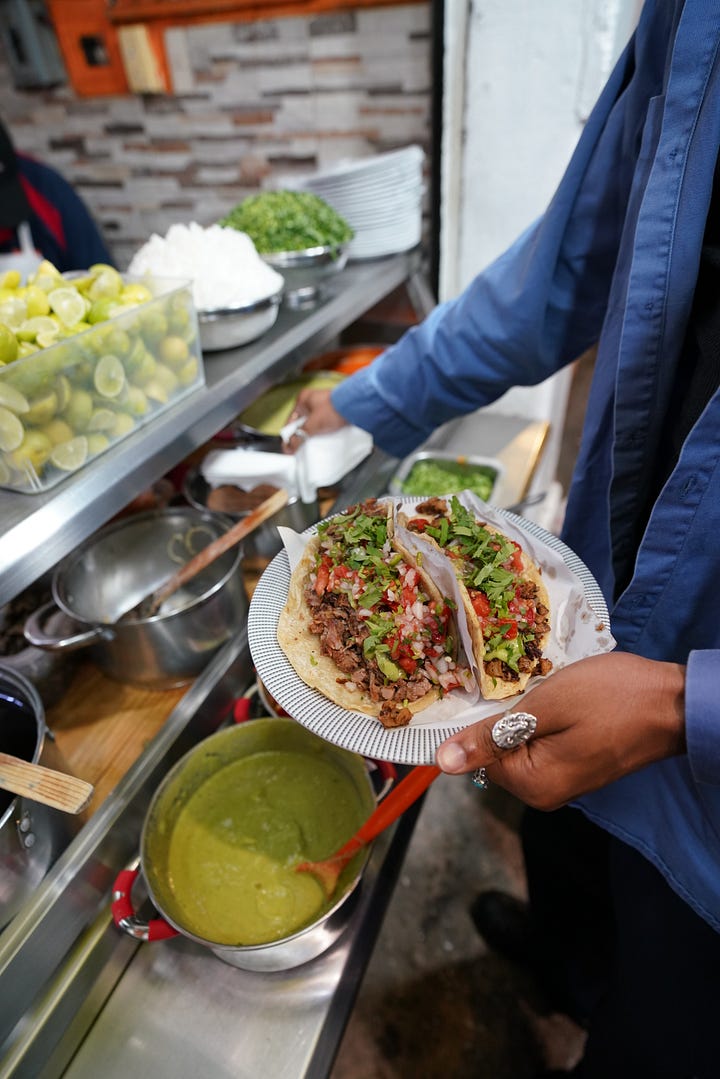
Doña Vero
Pozole verde, pambazos, taco de bistec, tlacoyo de chapulines (grasshoppers!), quesadillas de lentejas con picadillo, heart shaped hand pressed tortillas, pan de elote, choco pastel. Both times I’ve been here, the orders have been this large, this rich, like we’re having a family feast. Doña Vero makes you feel right at home, with pink wallpaper, amazing service (thank you so much Juan!!!), and a relaxing energy that has made my visits very sweet. But the food is serious! The menu is extensive, ranging with dishes across many states and regions in Mexico and everything is good. There’s even vegetarian and vegan takes on traditional plates like pozole rojo and ceviche. What I often dream about, though, is their pozole verde, a traditional Mexican stew that usually contains hominy and pork/chicken/chicharon, with a thick broth made of chiles. At Doña Vero, the pozole verde is wonderfully complex, with oregano and red chili flakes on the side to add yourself, and some tostadas to dip in. With each new dish that was brought out, there was a sense of elation and fascination, especially surrounding my friend Zac’s courage to go for the grasshoppers (I can’t recommend more by the way, try some when you go to Mexico!). In the end, the conversations flowed beautifully and we left feeling like we’d entered a dream for a while. Did I mention you can press a rubber chicken hanging by your table if you need anything? Brilliant.
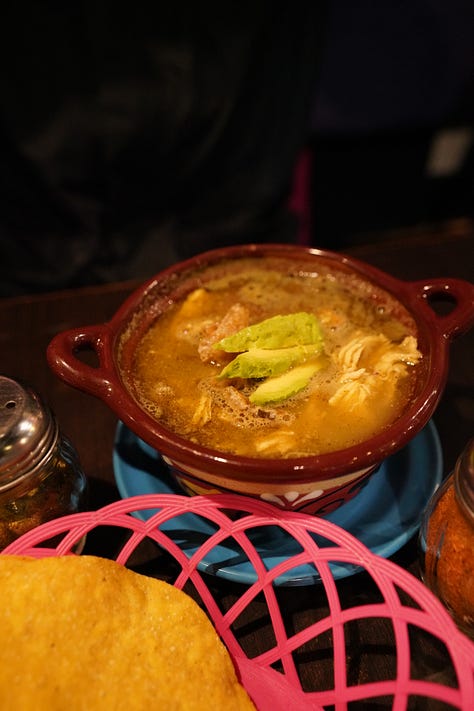

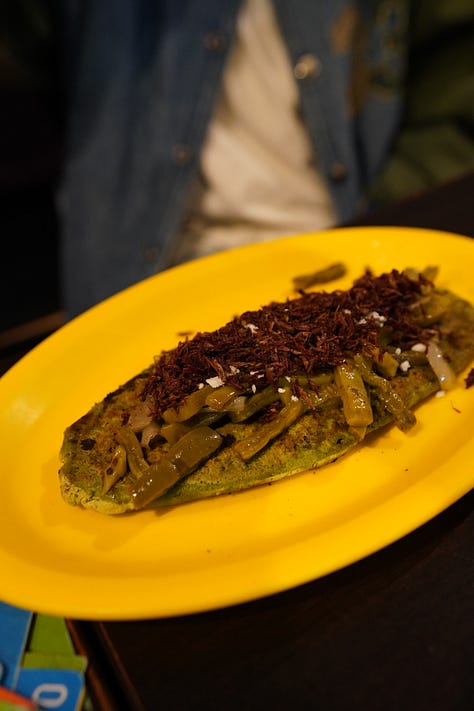

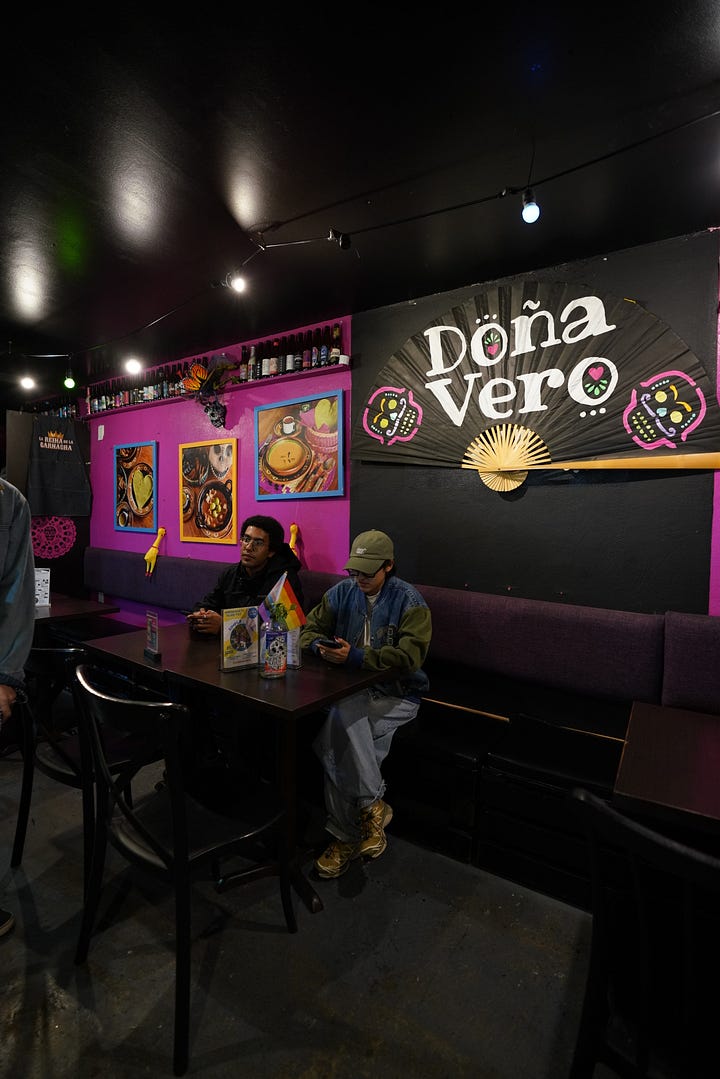
Garcia Madero
Mexico City has more bakeries than Rosetta. I promise. Panaderias are a staple of many towns in Mexico and finding new ones can feel like a high-reward scavenger hunt. I found Garcia Madero by strolling past one morning before leaving the city. There are two barn-like walls open towards the street, one or two people working on whatever needs to be made next, the display case facing the sidewalk, selling itself. The first time I went, I was sold by this display case, not because of what was in it, but because of the amount of wasps in one place. While there are other places with this visual, I’d never seen so many wasps in one place, drawing to the baked goods. I needed what they were having. Everything here is entirely artisanal, made with masa madre (sour dough), and they don’t utilize any fermenters or any kind of additives for the processing of the bread. We caught them in their afternoon run while taking pictures for the newsletter and they did not disappoint. We got the works: the chocolate chip cookies made my friend Luis gasp when he bit into it, the chocolate oozing out of the sugary dough. An amazing lunch roll with jamón serrano, quesos españoles, and an amazing tomato in the middle had us floored. A loaf of bread that may or may not have been finished by the evening, in addition to a scone and other cookies. The morning run consists of croissants, traditional Mexican conchas, cinnamon rolls, baguettes, and charcoal bread. There’s also never a line. So it already has Rosetta beat there.
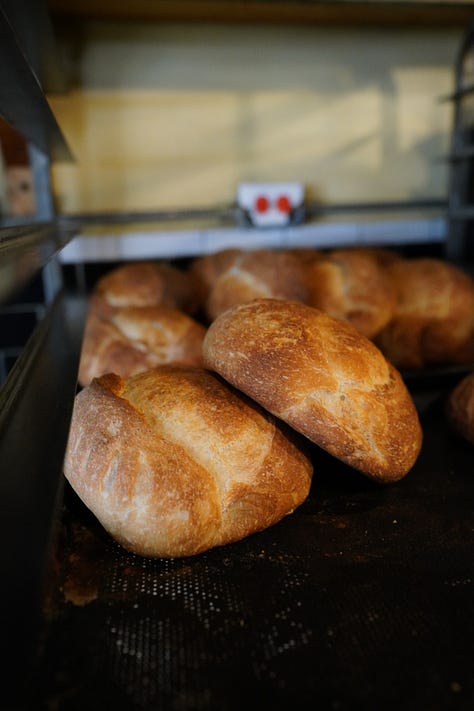
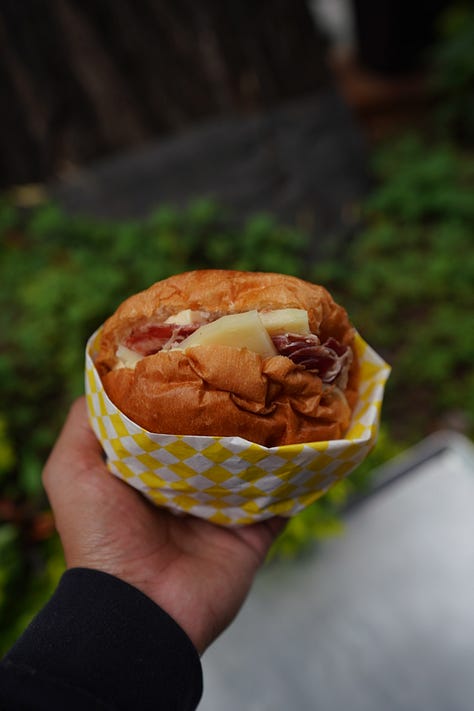
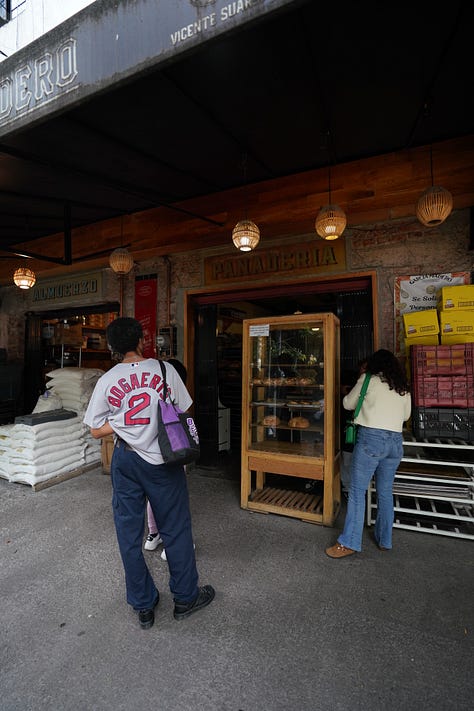
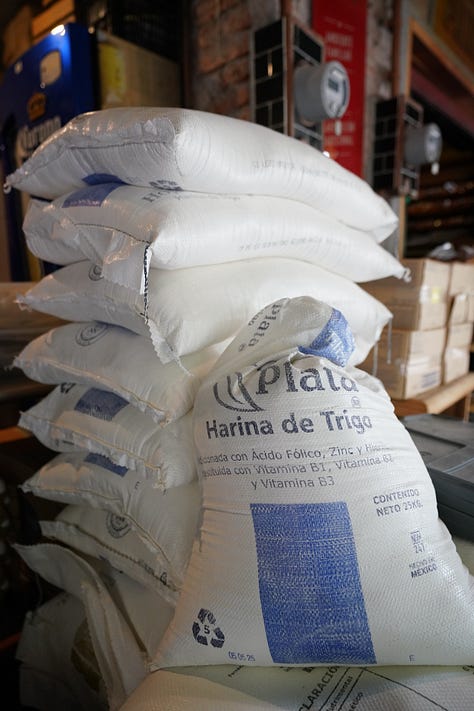
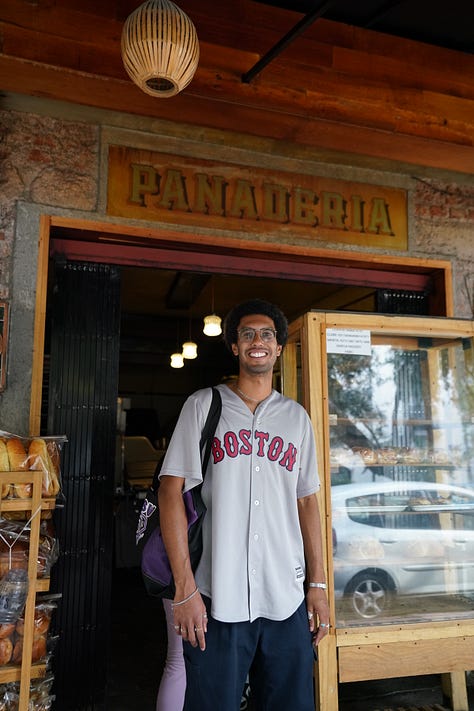
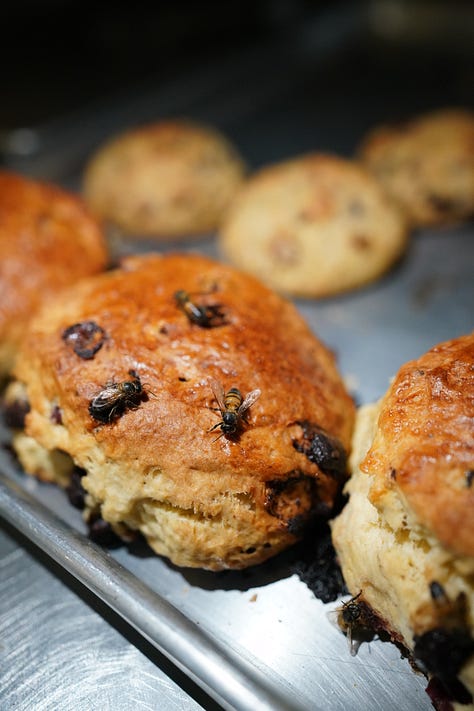
I’d like to give a special thank-you to Liv for inviting me to write for right on Franklin this week! I love roF with all my heart and it has been so cool to see it grow and flourish like this, it is a truly special project!
Living in Mexico these last two years has been a true gift and it was really fun sharing a small chunk of my life here, if anyone ever has any questions or needs anything else in terms of traveling to Mexico, I am more than happy to help or get you the help you need!






love this, adding these to my list immediately
Oh this is a great post